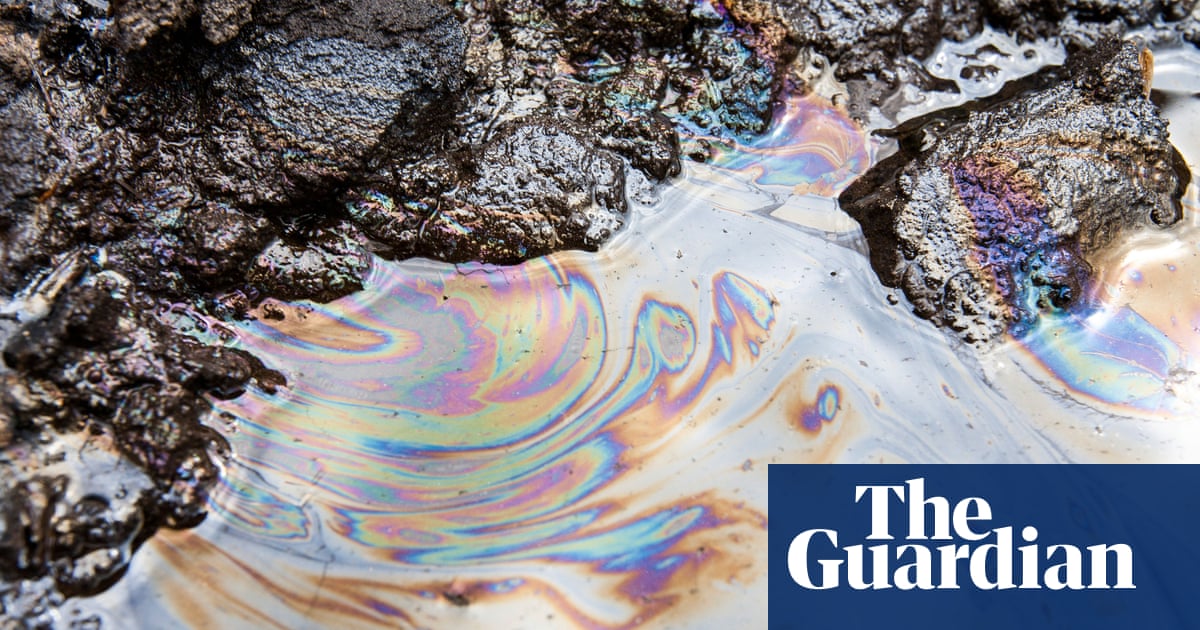Hahaha, and this is just the extraction phase. The estimated reclamation liability for the oil sands is 200 billion dollars. Alberta currently has checks notes 2 billion in reclamation bonding for the oil sands…
So we have a mostly landlocked, massively polluting industry, with insane operating costs, selling their product at discount on a volatile market controlled by a cartel (OPEC). DEFINITELY too big to fail, right?
Right guys?
Like we certainly won’t be stuck with 198 billion in clean up, right?
Guise?
Guise?
Well, well, well. If it isn’t my old friend externalities.
This is the best summary I could come up with:
Research published in the journal Science found that air pollution from the vast Athabasca oil sands in Canada exceed industry-reported emissions across the studied facilities by a staggering 1,900% to over 6,300%.
Academics said this means that damaging reactive pollutants from the oil sands are equivalent to those from all other human-made sources across Canada with severe health implications.
Keith Stewart, a senior energy strategist for Greenpeace Canada, said: “In quantifying the astonishing and largely unreported levels of health-damaging air pollution coming out of oil sands operations, these scientists have validated what downwind Indigenous communities have been saying for decades.
For decades Indigenous communities in the region have complained about the health impact of toxic air caused by the oil sands operations.
“We are told this is all within the limits and OK but this report backs up what the communities living in these areas experience – it is so bad they cannot open their windows because it hurts their lungs to breathe – especially at night.”
These emission underestimates were not just observed at the more well-known surface mining operations, but also from in situ extraction facilities that represent over 50% of production with projected increases.”
The original article contains 532 words, the summary contains 197 words. Saved 63%. I’m a bot and I’m open source!
Extracting tar from these sands amounts to cleaning them. So, this is not polluting : it is cleaning !
…please change my mind because I am obviously completely wrong here 😋 ( I should also read the article )P.S. : Article say it creates bad air pollution … honestly, I was expecting severe water contamination lasting for decades …
P.S.2 : Original paper :
in the journal ScienceP.S.3 : Such a rabbit hole ! Reading the science paper what I understand is they sample air while flying a plane through the area downwind. Then, they heat this air sample to burn all those hydrocarbons and finally what they analyze is the carbon dioxide combustion product which is one PPM above the normal air concentration or 400 PPM so they measure 401 PPM and on top of this maybe they did this while in Canada there was those huge forest fire that change the air to orange smoke for many months … Well, I don’t know if this is good science or not but I have doubts.
They address concentrations varying among sites and comparative to urban areas. They also did other tests besides what you mentioned. Note:
Time- and spatially integrated samples of I/SVOCs were collected during box flight segments (for example, Fig. 1A) and downwind transects and analyzed by means of gas chromatography on both unit-resolution and high-resolution mass spectrometers [gas chromatography–electron ionization–mass spectrometry (GC-EI-MS) and gas chromatography–time of flight (GC-ToF)], which revealed abundant complex mixtures of I/SVOCs near both surface mining and in situ facilities (Figs. 2 and 3). IVOCs (C12 to C18) and SVOCs (C19 to C25) were uncharacteristically abundant relative to VOCs (Fig. 1E) and were observed around various facilities, as shown in selected flight samples in Fig. 2A (additional examples are available in figs. S6 and S7). The relative abundances and composition varied between and around facilities, with maxima ranging from C17 to C22 (Fig. 2A, figs. S8 and S9, and tables S5 and S6), which may suggest varying on-site sources and emissions pathways. There are stark differences in the observed concentrations when compared with that of urban areas.
Emphasis added to the last sentence mine. Why shill for oil at the expense of your own health?
There are stark differences in the observed concentrations when compared with that of urban areas.
Well yes, I read enough of the article to understand this is what they meant but also that there was large unexplained variations (noise) so I just gave up. I don’t have the resources, knowledge and the time to conduct a good, complete analysis.
Why shill for oil at the expense of your own health?
Now this is a multi-billion dollar question and before they shut down the tar sands, many more studies will be made. So, it’s not for me to decide and we will have the opportunity to see more in this battle.
Anyway, thanks for your interest, take care.




